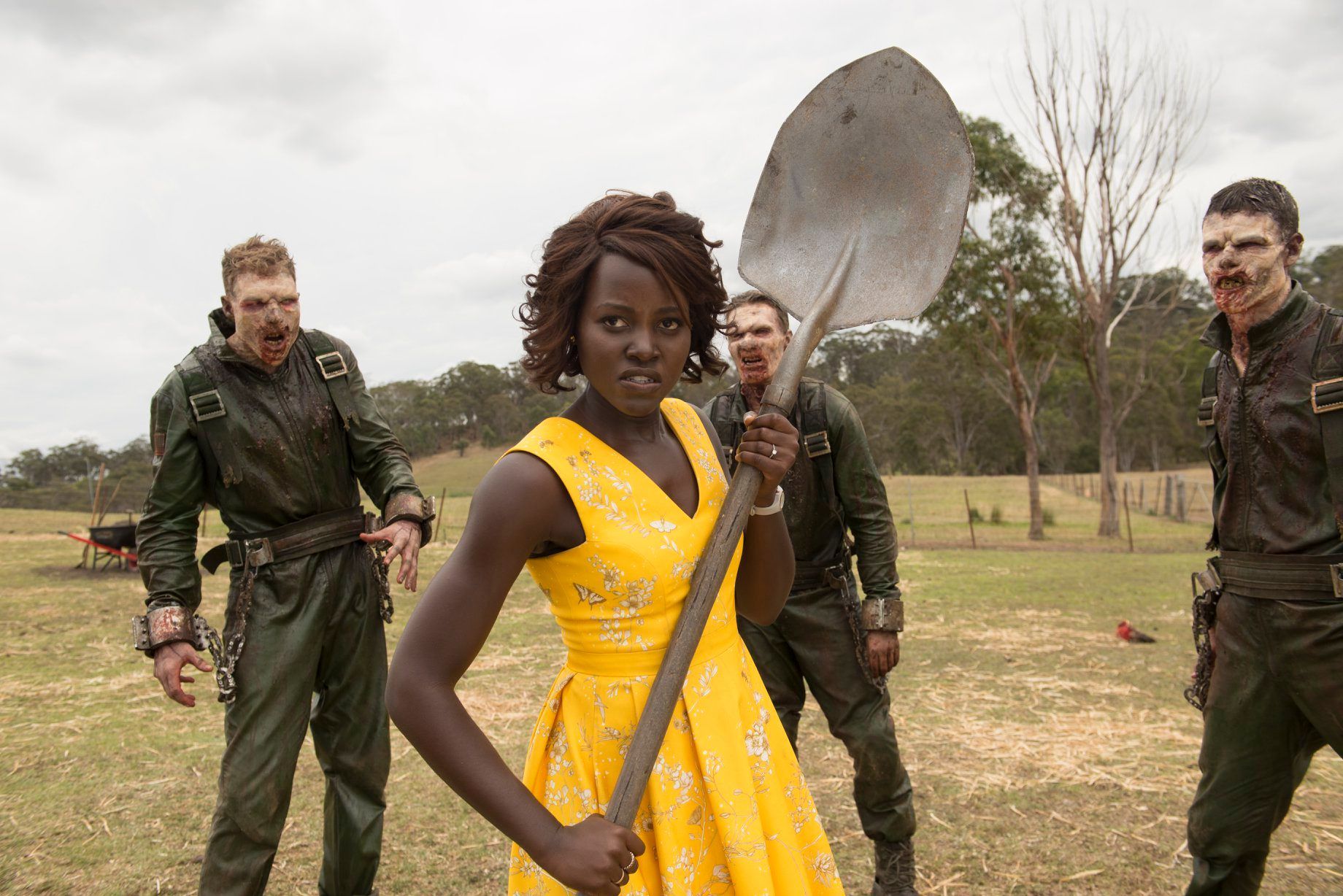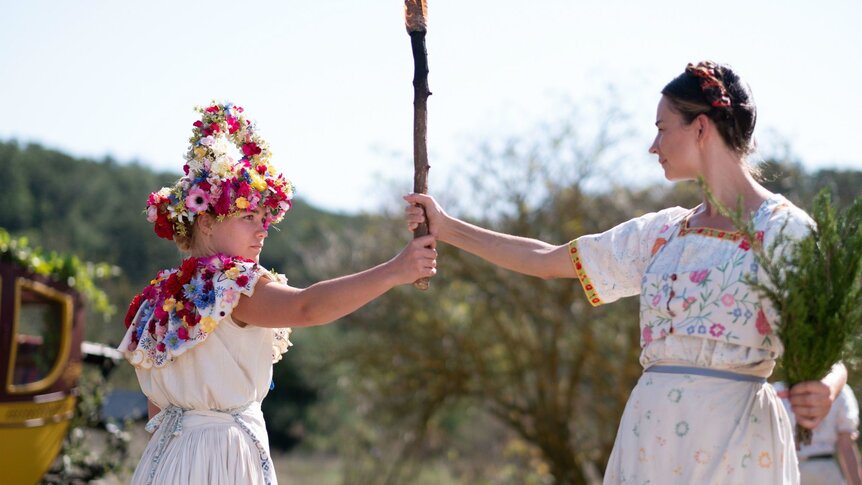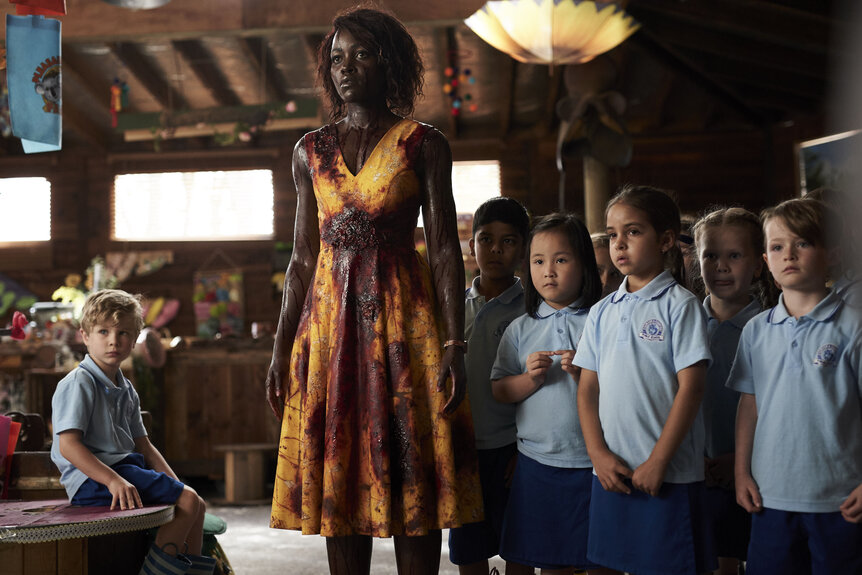Create a free profile to get unlimited access to exclusive videos, sweepstakes, and more!
How the dress has become power dressing for horror heroines

We've all heard of the term "fashion statement," and for over a century cinema has delivered some of the most iconic, especially when it comes to dresses worn by women. From Audrey Hepburn's LBD in Breakfast at Tiffany's to Cher Horowitz's Alaia in Clueless, these garments say a lot about the time, the culture, and the character wearing them.
The dress really is a powerful symbol of femininity. It can be seductive (Marilyn Monroe's in The Seven Year Itch) and sexually liberated (Jennifer Grey's in Dirty Dancing), coy and cute (Judy Garland's in The Wizard of Oz), or rejection of conformity (Molly Ringwald's in Pretty in Pink). This year, however, it's been rather interesting to witness how the costume has served as power dressing for certain heroines of horror.
Take Midsommar and the transformation of Florence Pugh's character Dani. From the beginning of the movie, she's seen in sweatpants and T-shirts in mostly muted colors that could be considered more on the masculine side of fashion. In these garments, her manner is one of weakness. She's suffering from grief, trauma, and a constant feeling of despondency that somewhat increases the dependency she has on her boyfriend Christian (Jack Reynor).
Then she puts on a dress and everything starts to change. Dressed by the women of the Haga commune, Dani takes part in the Maypole dance and proves her strength and endurance by lasting longer than any of the others to become May Queen. It's an intense scene, but in that white, embroidered gown it's the first hint that she's coming out of her shell and willing to win for herself. Then she witnesses Christian having sex with another woman, leading to the scene of her wailing with the Haga women. Crying might seem like a weakness, but in this moment she is purging all the pent-up grief and insecurity she's been internalizing for too long.
The film ends with Dani wearing the ultimate dress of femininity, a magnificent gown adorned with thousands of blooming flowers. In this showstopper, she chooses Christian to be sacrificed, finally letting go of his toxic hold and her trauma. Dani's smiling face in that floral dress becomes the ultimate display of female empowerment.
The wedding dress has long been a symbol of purity, innocence, and giving oneself over to the subordination of men's desires, but in Ready or Not Samara Weaving's Grace flips the switch on that interpretation. Once our heroine realizes she's married into a psychotic family who plan on ending the day's nuptials with her head on a silver platter, she soon changes the purpose of her gown to be one of survival.
"The dress comes in handy, it's a weapon, she can use it to defend itself," Weaving said to SYFY FANGRRLS earlier this year. "She uses it very logically, rather than letting it get in the way, you know, she's not too attached to her wedding dress. She doesn't mind that she can tear it up and go."
By the movie's end, that wedding dress is no longer being worn by a girl ready to conform in order to become part of this elitist family, but by an independent woman who has fought long and hard for her life and autonomy.
Little Monsters sees Lupita Nyong'o light up the screen in a yellow dress while battling zombies. As kindergarten teacher Miss Caroline, the actor fends off the undead threat to her young class while at a petting zoo, and her outfit soon becomes a canvas for blood and guts. Writer and director Abe Forsythe says the yellow dress was chosen to represent Miss Caroline as the sun to her students in sky-blue uniforms.
"Throughout the movie, we find ways of visually showing the horrors of the world trying to corrupt the innocence of our children," Forsythe explained to SYFY FANGRRLS. "Which is why her dress gets covered in blood and gore while she protects her school class, leaving them spotless in comparison. But even when her yellow dress is stained with blood, her sunny disposition is unwavering."
It's not just Miss Caroline's "sunny disposition" that is "unwavering," but also her role as a fierce protector. Throughout the film she uses her own smarts, courage, and willpower to keep these students alive. She symbolizes the strength of women to get things done even when the world is against them, and the fact that none of these children are her own shows that women don't need to be mothers to risk their lives for young ones or others.
Together, these films have given new meaning to power dressing and proved that this garment can be just as much a symbol for female empowerment as it is for femininity. In 2019, the dress can be a tool for resistance against subordination, patriarchy and gender conformity when wielded by these horror heroines.




























